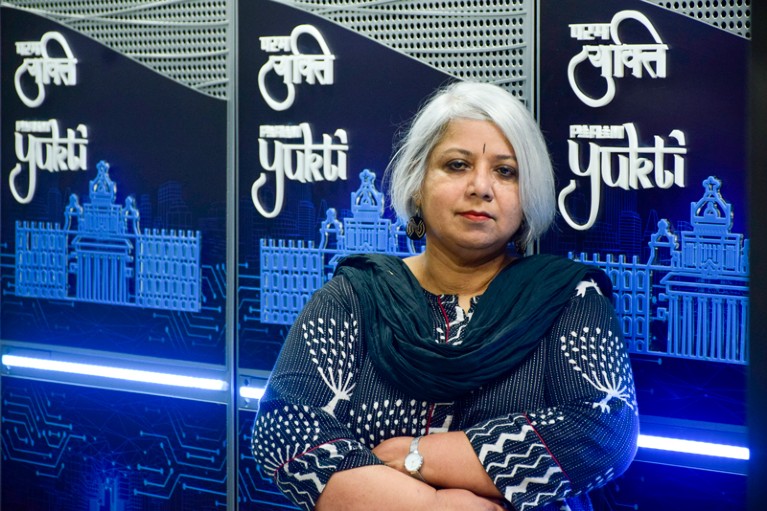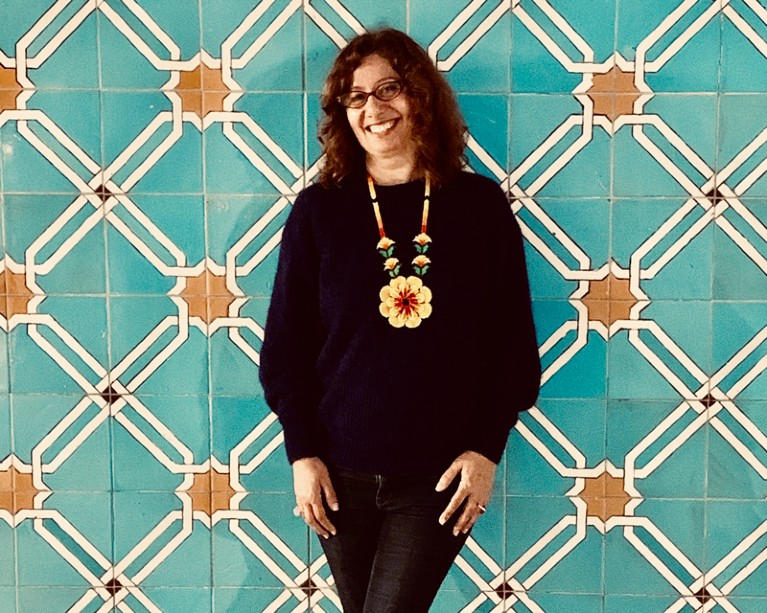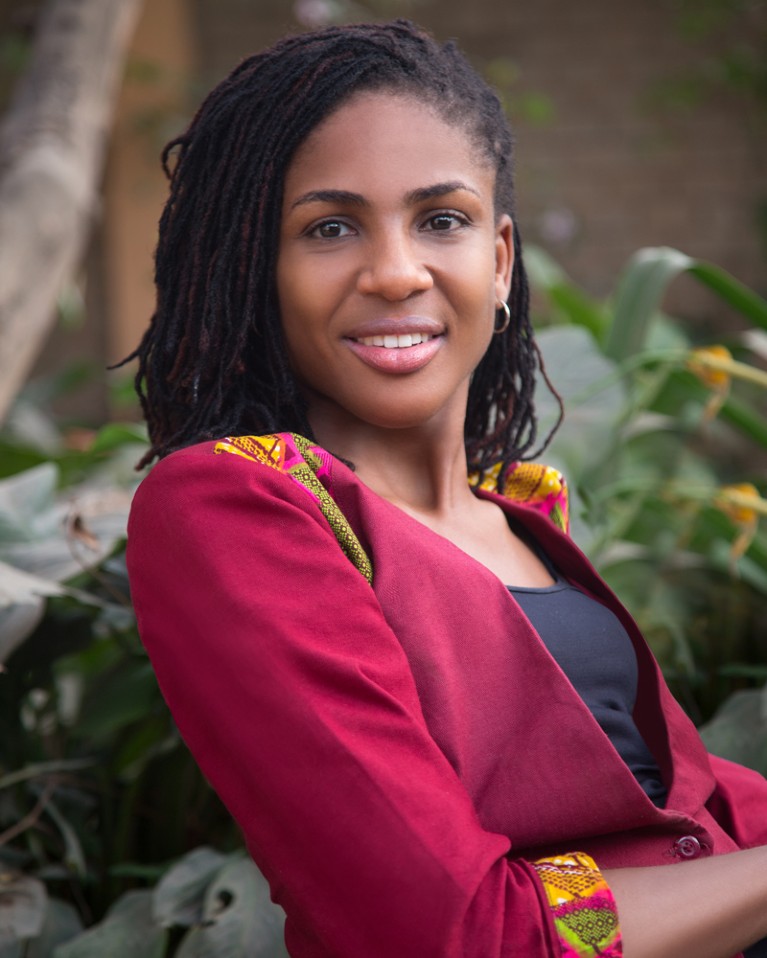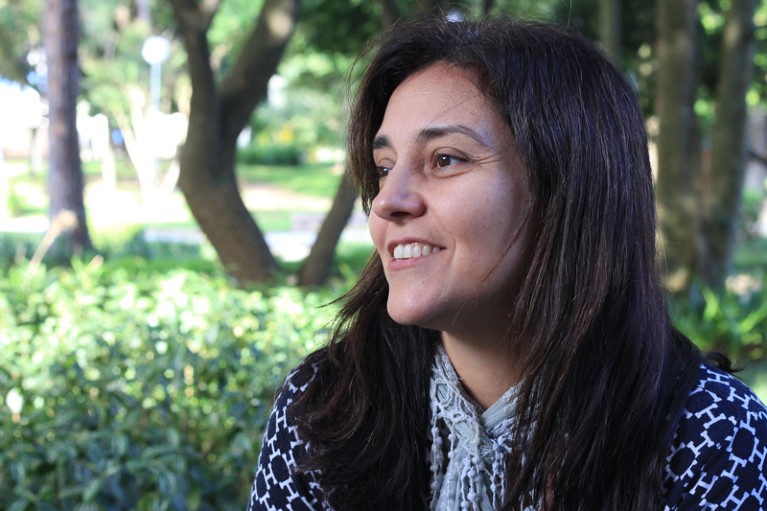Ada Lovelace Day, this year held on 10 October, sees people around the world celebrating the achievements of women in science, technology, engineering and mathematics (STEM). The celebrations are named after the nineteenth-century English mathematician Augusta Ada King, Countess of Lovelace. Even before ‘computing engines’ were built, she recognized the potential of programming — “a new, a vast, and a powerful language … for the future use of analysis,” she wrote in 1843 in her own additions to her translation of an article on an analytical engine. Her pioneering contributions, however, went largely unnoticed until the 1950s. Here, women navigating computing careers share their stories on the field’s various cultures, consider the gendered biases that permeate technology and offer solutions to improve equity.
JANET ABBATE: Counter the ‘tech bro’ image
“Incompetent!”, “Should be fired!” — the e-mails sent to my manager, the only female technical lead in a prestigious software project, shocked me. I had come to her for advice after a male team leader had questioned my competence to perform some potentially disruptive system changes. When she showed me how our male colleagues had treated her — an extremely experienced developer — I realized the problem was them, not me. My mentor’s example of refusing to be cowed by a belligerently macho work culture helped me to thrive.
Many factors can deter women and non-binary people from pursuing a career in computer sciences. These include introductory ‘weed-out’ courses that disproportionately disadvantage students from marginalized groups; sexual harassment; and long hours that seem incompatible with raising a family (particularly affecting women, who are often primary carers). A 2020 report found that half of young women who go into technology fields drop out by the age of 35 — largely owing to workplace culture (see go.nature.com/3reykro).
Podcast: ‘This doesn't just fall on women’: computer scientists reflect on gender biases in STEM
But there’s also a more subtle barrier to participation: technical expertise is often framed as a masculine characteristic. Studies have shown that when employers in science, technology, engineering and mathematics (STEM) are sent identical resumes with male- and female-sounding names, they tend to select the former (see, for example, go.nature.com/46vuiqs). Algorithms replicate this bias.
The types of skill associated with computer science — and the types of people who are assumed to possess those skills — have changed over time. Pioneers such as Ada Lovelace, Grace Hopper and Katherine Johnson gained entry to the computing field through their expertise in mathematics, one of the few scientific fields that welcomed women in the past. But Hopper also spoke and wrote for popular audiences, assuring women that their ability to plan and execute a fancy dinner (project management by another name), or their attention to detail in sewing a dress, were skills that would help them to excel in computing. Others agreed. In a 1971 book entitled The Psychology of Computer Programming, Gerald Weinberg, a former manager at the computing firm IBM, argued that interpersonal communication and cooperation — social skills typically associated with women — were important for computer professionals, famously advocating for ‘egoless programming’. But over time, a more-aggressive ‘brogrammer’ or ‘tech bro’ image emerged.
One way to challenge those assumptions is to increase the visibility of women who embody not only expertise but also the joy and fun of computer science. Organizations such as AnitaB.org and Girls Who Code highlight the accomplishments of female and non-binary computer scientists around the globe. Popular culture could broaden that audience. Where is the computer-science counterpart to the female emergency-room physicians and forensic pathologists we see everywhere on television?
SHOBHANA NARASIMHAN: Bridge the digital divide

Shobhana Narasimhan is often still the only female speaker at conferences in her field.Credit: Chandan Kumar
For someone who is now head of a computational nanoscience group, I came to computers surprisingly late. In 1985, when I started my PhD in physics at Harvard University in Cambridge, Massachusetts, I had never used one before. I couldn’t say what my preferred operating systems were or even what a cursor was. I recognize now that the roots of my inexperience lay in what we now call the digital divide — the gap in access to technologies depending on regions and other factors such as gender and socio-economic status.
I studied physics at the Indian Institute of Technology (IIT) Bombay, in Mumbai. At that time, India had five IITs; each was partnered with a foreign country from which they received computers. Our partner was the Soviet Union, and we had a clunky and slow Soviet-era mainframe computer that used paper punch cards for data storage. Punching and running cards on it was a logistical nightmare. Anyone who could produce an output was guaranteed an ‘A’ in the programming course. That is, in my experience, unless that person was a woman. I was not alone in feeling that the professor in charge was more likely to give women lower grades. And so, when I moved to Harvard, I was disadvantaged compared with my computer-savvy US classmates.
Science’s gender gap: the shocking data that reveal its true extent
I eventually caught up and returned to India 11 years later as a computational scientist, a role in which I found myself one of few women. Computational science is often perceived as being more ‘woman friendly’ than experimental science, because it is comparatively easy to work from home and so a good work–life balance seems achievable, yet the gender diversity hasn’t improved all that much, especially in academia. I am often still the only woman on a committee, or invited to speak at a conference.
Thanks to India’s National Supercomputing Mission, the nation now has fast and large computers. But only a few people have access to them. In other locations, particularly in low- and middle-income countries, the situation is often much worse. When I lecture in the African School on Electronic Structure Methods and Applications workshop series, for example, I meet many students and researchers who are great scientists, but it is impossible for them to compete internationally with only a laptop.
Compared with experimental science, computation is cheap and a relatively small investment can go a long way. Roughly US$10,000 can buy you a computer cluster that can tackle interesting problems. There’s no need to buy expensive chemicals and reagents, although a stable electricity supply and a fast Internet connection are needed, which are not always available.
SANA ODEH: Learn from successes in the Arab world

Computer scientist Sana Odeh.Credit: Gail Segal
High numbers of women study computing in Arab countries. The proportions of women who graduated in information and communication technologies programmes beyond secondary education range from 30% to 76%. Several regions have proportions close to or above gender parity (more than 45%) — including in Algeria, Bahrain, Oman, the occupied Palestinian territories, Qatar, Saudi Arabia, Syria, Tunisia and the United Arab Emirates. These compare with around 30% in Singapore and Mexico, for example, nearly 25% in the United States and around 20% or less in many European countries — as low as 10% in Belgium and Switzerland.
Still, once women complete their degrees, the barriers they encounter when entering the workplace in Arab countries are similar to those faced elsewhere. Stereotypes about gender roles, as well as a lack of infrastructure to support carers, still constrain working women. Despite low numbers of women working on the whole in these regions, it’s worth noting that rates of labour-force participation go up considerably among women with higher levels of education.
How centuries of sexism excluded women from science — and how to redress the balance
I’m keen to understand these trends. I was drawn to computing because it is a creative and empowering field, as well as a challenging one, and also because I loved programming games. I now try to integrate games into my classes, especially when I teach the introductory computer-science course. Since 2015, I have been working to get a better grasp of the roles that social norms and institutional structures have in supporting or discouraging women in the Arab world from entering computing fields — including in academia, industry and start-up companies.
With my colleagues — economist Jennifer Olmsted at Drew University in Madison, New Jersey, and anthropologist Fida Adely at Georgetown University in Washington DC — we are using a combination of survey data and interviews to examine what challenges women face and what support systems they rely on. Our data suggest that at universities, whether those are single or mixed gender, women are pursuing computing in high numbers. Like me, many of the women we spoke to view computer science as an exciting and challenging field in which women believe that they can succeed. In both the interviews and surveys, women were passionate about the field and mentioned that they chose it to contribute to improving society. Many are also geographically flexible, relocating for education and work in the Arab region and beyond.
Getting an insight into the cultural, institutional and socio-economic factors that underlie the high proportions of women pursuing computer-science degrees in the Arab world is crucial to improving outcomes both regionally and in other parts of the globe.
FARIDA N. BEDWEI: Nurture computer literacy early

Software engineer Farida Bedwei.Credit: Xose Kakane
My interest in computer science started early. Growing up in the 1980s as a global citizen (I first lived in the Caribbean and the United Kingdom, then moved to Ghana at the age of nine), I went through a phase of having unrealistic ambitions. One was wanting to be a ballerina. Considering that I have cerebral palsy, which affects my ability to walk, this dream was far-fetched. My disability also affects my hands, so writing is a challenge. To help, I started using a manual typewriter at the age of five as my main means of written communication. I got a home computer with word-processing software for schoolwork, which came with the BASIC programming language. I wrote my first piece of code when I was seven.
How to make the workplace fairer for female researchers
While being homeschooled, I was enrolled in computer-training school. I was just 11 years old; all my classmates were over the age of 18. I later heard that some of my course mates had initially doubted whether I belonged there, but they soon started asking me for help. When it was time to start senior high school, I did well in the entrance exams, but no nearby schools were disability-friendly. My mother suggested exploring the computing profession instead, so I did a diploma in the management of information systems before landing my dream job — a developer at SOFT, one of the leading software companies in Ghana.
I held a variety of positions at SOFT, to keep things exciting, and then joined a start-up company called Rancard Solutions in Accra. While I was there, I broadened my experience by taking a diploma in information technology (IT) and went on to complete a one-year computer-science programme at the University of Hertfordshire in Hatfield, UK.
Over the past 25 years, I have seen a lot of improvements in gender diversity in the IT industry in Ghana and other African countries. When I started my career, I was usually the only woman in the technical office. Most women left after a few years — workplaces demanded long hours and had little flexibility. Things are better these days, with employers understanding the need for a work–life balance. Changes in the culture of the field, combined with private and public initiatives to teach and encourage girls and women to code and to study STEM subjects, such as Girl Code Africa, have drawn more women to technical roles.
SORAIA RAUPP MUSSE: Create opportunities for women

Soraia Raupp Musse is investigating how gender bias is reproduced with virtual characters.Credit: Daniele Souza
In 1986, when I first studied computer science at the Pontifical Catholic University of Rio Grande do Sul (PUCRS), a private university in the south of Brazil, one-third of the group were women and the atmosphere was friendly. Even so, during my studies and my first job I felt that I needed to ‘prove’ myself to be capable, more than the men did. I am sure this feeling is even worse for students today — between 2010 and 2019, only 13–16% of students in Brazil enrolling in computer science were women; this number reached 19% in 2021 (see go.nature.com/48gmbhc; in Portuguese).
How Nancy Hopkins and her tape measure revealed the extent of sexism in science
Gender biases are prevalent throughout societies, and are relevant to computer science. Algorithms often reproduce and amplify them. For example, facial recognition systems are less accurate at recognizing dark-skinned women. In my research laboratory, we are exploring how such biases are reproduced in the virtual environment, through characters in online games and movies. We replicated a 1976 experiment that analysed how men and women attribute emotions to a (real) baby by showing people videos of a virtual baby, created by computer graphics, and found biases similar to those observed in real life (V. Araujo et al. SIGGRAPH Asia 2022 Tech. Commun. https://doi.org/kv5g; 2022).
To encourage more women into computer science, here at PUCRS I coordinate the Project ADA initiative, backed by a private IT consulting company, which each year covers undergraduate tuition fees for a group of women. The recipients conduct research projects during three semesters, together with master’s and PhD students, giving them the opportunity to engage in a variety of areas such as computer graphics, artificial intelligence and security. Another crucial step is the transition to the workplace, which the programme also supports through internships and English classes. It has been great to see more women choosing computer science at PUCRS since Project ADA started in 2019.
VERENA RIESER: Increase retention by caring for carers
In the United Kingdom, in 2022, less than 20% of undergraduate students in computing were women or non-binary people (see go.nature.com/45fqehh). Retaining them in the workplace — both in academia and in industry — is a major challenge. A glass ceiling exists, but they are also more likely than men to leave the field at each stage of their careers. Few reach senior positions.
I was lucky to have female role models early in my education and career, in the fields of natural-language processing and dialogue systems. I now actively encourage gender diversity in the field of conversational artificial intelligence. Women are shaping this area of research in a number of ways. For example, together with my student Amanda Cercas Curry, I started exploring the gender-based abuse that chatbot and virtual-assistant systems such as Replika and Amazon Alexa are exposed to — which has the potential to transfer to interactions with real humans. I am also developing methods to detect and mitigate abusive language online.
Balancing a career and a family can be challenging, both in the tech industry and in academia. I have experienced this at first hand. One issue is that the computing community doesn’t accommodate career breaks. Even on maternity leave I felt pressure to keep up with my research and to publish papers — which is difficult to do while caring full-time for children.
One way to support women in academia is to offer research sabbaticals — during which other academic duties are suspended — after maternity leave. In 2020, I was fortunate to be awarded such an opportunity through a Royal Society Leverhulme Trust senior research fellowship. It gave me time and space to complete my projects and consolidate my research group.
Encouraging remote participation in conferences would allow people with care commitments to take part even if they cannot travel. Online and hybrid conferences have grown but they still offer too few opportunities for interaction. Flexible working arrangements can also be invaluable for primary carers. I encourage heads of departments and industry managers to consider these options for their staff members.


 Podcast: ‘This doesn't just fall on women’: computer scientists reflect on gender biases in STEM
Podcast: ‘This doesn't just fall on women’: computer scientists reflect on gender biases in STEM
 Science’s gender gap: the shocking data that reveal its true extent
Science’s gender gap: the shocking data that reveal its true extent
 How centuries of sexism excluded women from science — and how to redress the balance
How centuries of sexism excluded women from science — and how to redress the balance
 How Nancy Hopkins and her tape measure revealed the extent of sexism in science
How Nancy Hopkins and her tape measure revealed the extent of sexism in science
 Tackling pervasive sexism in Australian science requires money, leadership and time
Tackling pervasive sexism in Australian science requires money, leadership and time
 How to make the workplace fairer for female researchers
How to make the workplace fairer for female researchers
 Women in science
Women in science





